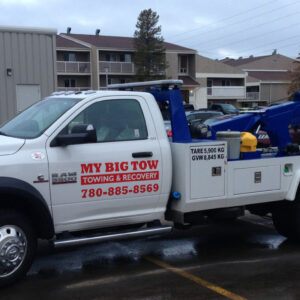Ever looked at a majestic tree and thought, “Wow, that must’ve taken years to grow”? Well, you’re absolutely right! But behind every strong, vibrant tree is often a little help from tree health services—a professional touch that ensures trees live long, disease-free lives. Whether you’re managing a single tree in your backyard or a grove of them across your property, understanding how tree health services work can make all the difference in maintaining their beauty and vitality.
What Are Tree Health Services?
Tree health services are specialized treatments provided by certified arborists and tree care experts to diagnose, maintain, and enhance the overall well-being of trees. This includes everything from pest control to soil enhancement and disease management.
These services don’t just keep trees looking good—they help them thrive under various environmental conditions, especially in urban or suburban settings where natural tree ecosystems are disrupted.
Why Are Tree Health Services Important?
Trees, like humans, can suffer from a range of issues—nutrient deficiencies, fungal infections, pests, physical damage, and more. Ignoring these problems can lead to declining health, safety hazards, and even tree death. Professional health services act as preventative medicine and emergency care all rolled into one.
Key Components of Tree Health Services
1. Tree Health Assessments
A professional arborist inspects your trees for signs of disease, decay, pests, or structural issues. These assessments help catch problems early—before they become dangerous or expensive to fix.
2. Soil Testing and Fertilization
Just like people need good food, trees rely on nutrient-rich soil to grow. Experts test your soil’s pH, nutrient levels, and structure, then provide tailored fertilization solutions to improve tree health from the roots up.
3. Pest and Disease Management
Trees can fall victim to insects like borers or diseases like root rot and powdery mildew. Certified tree health services identify and treat these issues using eco-friendly, scientifically backed methods.
4. Pruning and Structural Support
Selective pruning helps maintain healthy growth, prevents overcrowding, and removes dead or infected limbs. For trees at risk of splitting or collapsing, professionals may install bracing or cabling systems.
5. Water Management
Overwatering or underwatering can both harm trees. Tree health specialists assess moisture levels and offer solutions like mulching or proper irrigation planning.
How Tree Health Services Help Different Types of Trees
Young Trees
They need special attention to establish strong root systems and resist pests. Tree health services ensure proper planting, fertilization, and watering schedules.
Mature Trees
These giants need regular check-ups to maintain stability and avoid disease as they age. They often require structural evaluations and targeted pruning.
Urban Trees
With limited soil space and exposure to pollution, urban trees face unique challenges. Tree care experts help them adapt and flourish in concrete jungles.
Signs Your Tree Needs a Health Check
-
Yellowing or dropping leaves out of season
-
Cracked or peeling bark
-
Dead or falling branches
-
Unusual growths or fungi
-
Visible pests or insect damage
-
Leaning or unstable trunk
If you spot any of these, it’s time to call a professional!
Benefits of Regular Tree Health Services
✅ Prevents Tree Loss
Routine care helps catch issues before they become fatal.
✅ Enhances Property Value
Healthy trees add beauty and value to your landscape.
✅ Promotes Safety
Weak limbs and diseased trees can be hazardous. Tree health services help prevent accidents.
✅ Supports Environmental Health
Thriving trees produce more oxygen, store carbon, and provide shade and habitat for wildlife.
How Often Should You Schedule Tree Health Services?
At least once a year, especially in spring or early fall. However, older or high-risk trees might need more frequent check-ups. Emergencies—like after a storm—also warrant immediate attention.
DIY Tree Health vs. Professional Tree Health Services
While you can do small things like watering or mulching on your own, diagnosing disease or pest infestations is a job for trained arborists. Professionals not only bring experience but also have access to advanced tools and treatments.
Choosing the Right Tree Health Service Provider
-
Look for Certification: Choose an ISA-Certified Arborist.
-
Check Insurance: Always verify liability and worker’s comp insurance.
-
Ask for a Detailed Plan: A good provider will give you a clear breakdown of what they’ll do.
-
Read Reviews: Online feedback and word-of-mouth are gold!
Cost of Tree Health Services
Costs can vary depending on the tree’s size, location, and the type of care it needs. A basic health inspection might cost $100–$300, while comprehensive treatment plans or emergency services could run into several hundred dollars. But it’s a smart investment—preventing tree loss or property damage can save you thousands.
The Environmental Impact of Tree Health Services
Healthy trees clean the air, cool the environment, and support wildlife. Regular health services amplify these benefits, especially in city environments where trees are under more stress. Think of it as tuning up nature’s air filter!
Conclusion
Trees are more than just pretty landscaping—they’re living, breathing parts of our ecosystem. Just like we visit the doctor for check-ups, our trees need regular care to live long, healthy lives. Tree health services provide the knowledge, experience, and tools to keep your trees at their best, from root to crown.
If you want your landscape to thrive, investing in professional tree care isn’t just a luxury—it’s a necessity.
FAQs
1. What’s included in a tree health assessment?
An arborist checks for pests, diseases, structural problems, soil conditions, and overall tree vitality.
2. How do I know if my tree has a disease?
Watch for unusual leaf color, bark damage, or fungal growth. A professional diagnosis is recommended.
3. Are tree health services worth the cost?
Absolutely! Healthy trees increase property value, prevent damage, and contribute to a healthier environment.
4. Can I treat tree diseases myself?
Some minor issues can be managed at home, but most treatments require professional tools and knowledge.
5. How long does it take for a tree to recover after treatment?
It depends on the problem, but with proper care, most trees show improvement within a growing season.
https://docs.google.com/spreadsheets/d/19nRbcr7vON6ao7MD8xeLNtxJQ5dL7iYF/edit?gid=1926684606#gid=1926684606/








